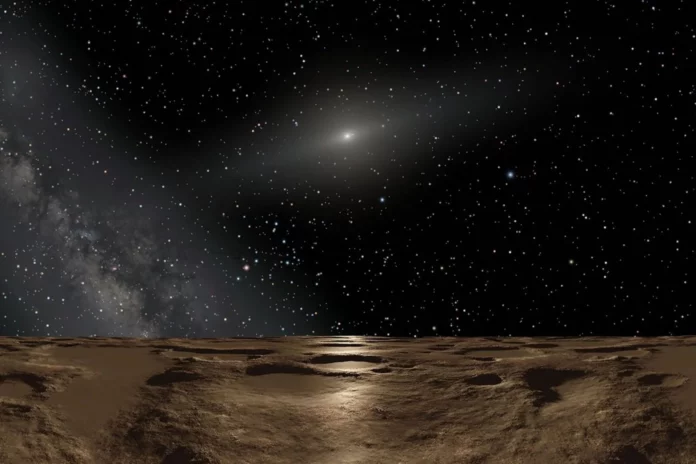On November 14, 2003, astronomers spotted the most distant object known at the time orbiting the Sun. They named it Sedna in honor of the Inuit goddess of the ocean. It’s a cold, reddish dwarf planet that drifts billions of kilometers from the Sun during its 10,000-year orbit before coming relatively close to our luminary. Its next perihelion will occur in July 2076, and astronomers want to take advantage of this rare encounter by sending a mission to the mysterious object.
A team of researchers from Italy is proposing a mission concept that could reach Sedna in 7-10 years using the most advanced technology. In a paper available on the arXiv website, they illustrate two experimental propulsion concepts that include a nuclear fusion rocket engine and a new take on solar sail technology. These technologies could reduce the travel time to Sedna by more than 50% compared to traditional space travel methods, providing scientists with a unique opportunity to gather clues about the early formation of the solar system and explore the theoretical Oort Cloud.
When Sedna was discovered, it was about 8 billion miles (13 billion kilometers) from the Sun. (Pluto, the best-known dwarf planet, is at an average distance of 3.7 billion miles from the Sun.) Sedna is known as a trans-Neptunian object, a group of objects that orbit the Sun further than Neptune. It has an extremely eccentric orbit: at its greatest distance, Sedna is 84 billion miles from the Sun, which is 900 times the distance between the Earth and our star. At its closest approach, Sedna will be about 7 billion kilometers from the Sun, almost three times as far as Neptune. That’s still far away, but close enough for the spacecraft to reach the celestial object before it plunges back into ultra-distant darkness.
Spacecraft have traveled longer distances before. “Voyager 1 and Voyager 2 began their interstellar journey in 1977 and have traveled 15 billion miles and 12.7 billion miles to date. “Voyager 2 reached Neptune in about 12 years. Based on current technology, scientists estimate that it will take about 20-30 years to reach Sedna during its closest approach, using Venus, Earth, Jupiter and Neptune as gravitational assistants. This means that the launch window for reaching Sedna is rapidly approaching, and there are no clear plans yet.
Instead, the researchers behind the new study propose alternative methods to help us get there faster. The first is a direct fusion rocket engine (DFD) currently under development at Princeton University’s Plasma Physics Laboratory. The fusion rocket engine will produce both thrust and electrical energy through a controlled nuclear fusion reaction, providing more power than chemical rockets.
“DFD is a promising alternative to traditional engines, offering a high thrust-to-weight ratio and continuous acceleration,” the researchers write in the article. “However, its realization remains subject to key engineering challenges, including plasma stability, heat dissipation, and operational durability in deep space radiation.” They add that, despite advances in fusion power, it is not yet clear whether it will be able to support long-term missions and power onboard instruments.
The second concept is based on existing solar sail technology, which is still experimental. Solar sails are powered by photons from the sun, using the energy generated by light to propel spacecraft forward. The researchers propose to coat the solar sails with a material that releases molecules or atoms when heated and provides the driving force in a process known as thermal desorption.
A solar sail powered by Jupiter’s gravity could reach Sedna in seven years due to its ability to accelerate continuously without the need to carry heavy fuel, the article says. However, this idea is fraught with problems. “Although solar sails have been widely studied for deep space applications, their feasibility for a Sedna mission requires evaluation in terms of long-term structural integrity, propulsion efficiency, and energy availability for scientific operations,” the article says.
Despite the slight time advantage, a solar sail mission would only allow for a flyby of Sedna, while a DFD engine could put the spacecraft into orbit of the dwarf planet for a longer mission. Either of these missions will provide us with the first direct observations of a previously unexplored region and help scientists better understand the larger boundary beyond which the solar system lies.









